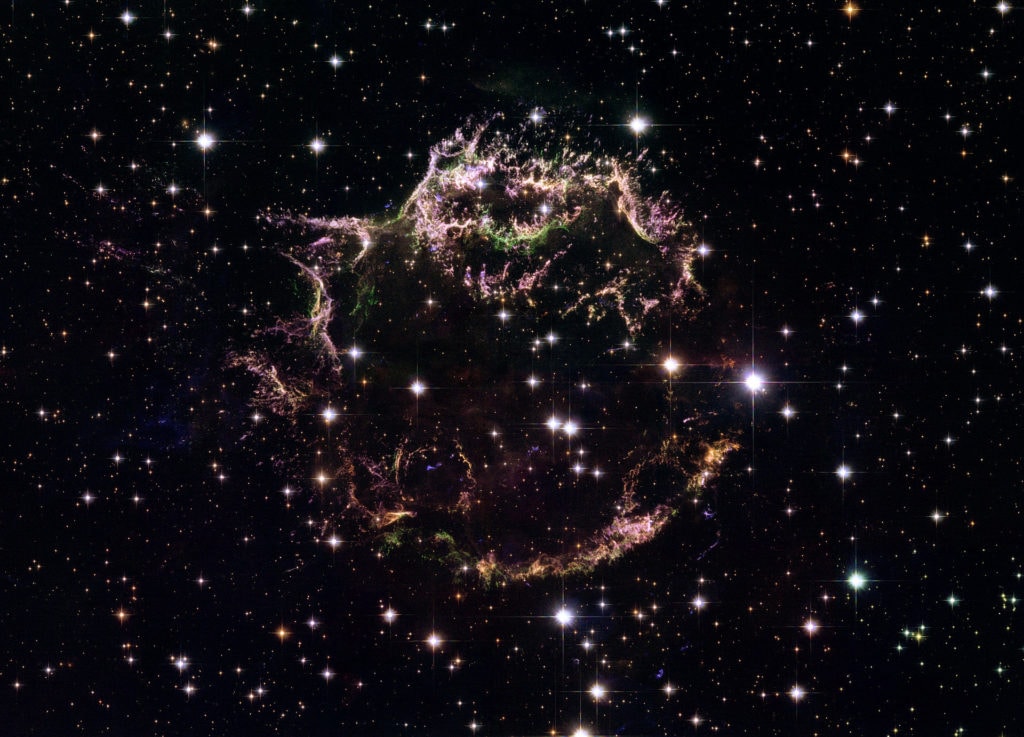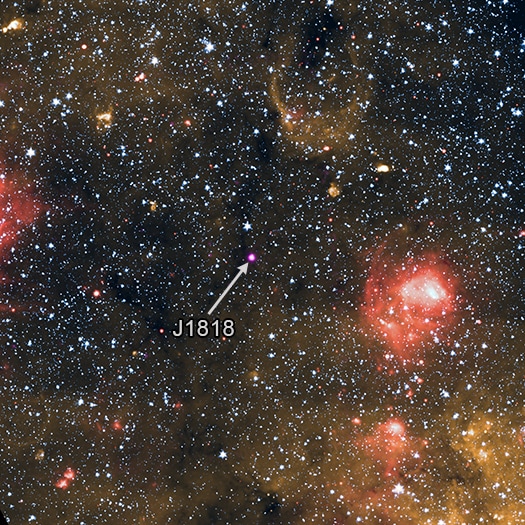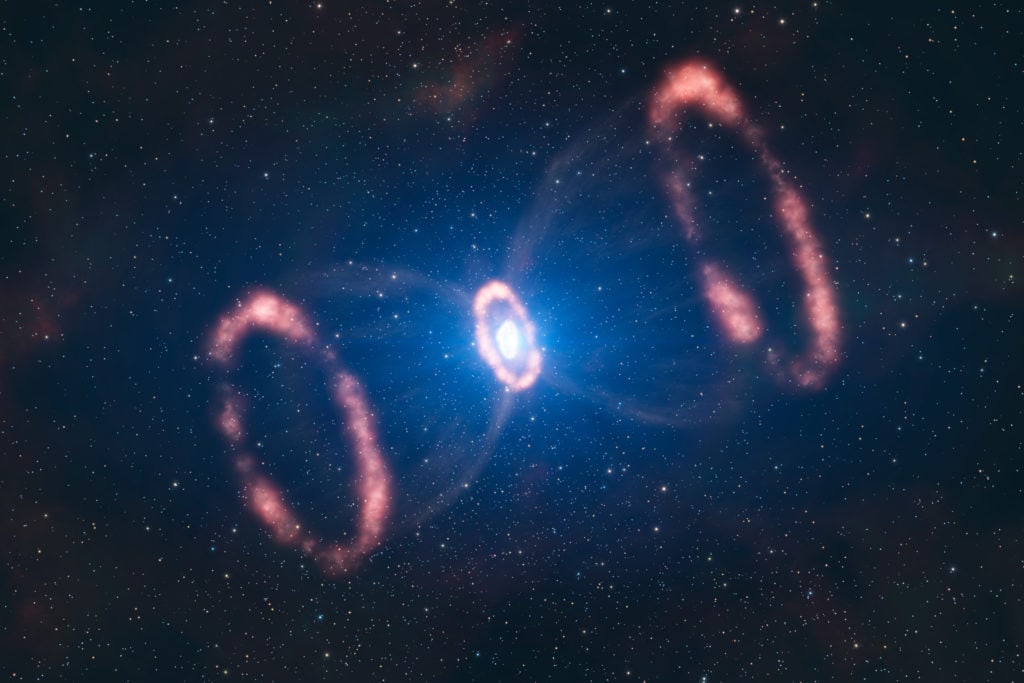To help one try and understand just how vast the ever-growing expanse of the cosmos is, it was said that there are more stars in our universe than there are grains of sand on every beach on this planet we call Earth. Space is a contradicting combination of chaotic tranquility. When we look up to the stars, we see the stillness and maybe even feel an overwhelming reminder of our insignificance as we exist in a tiny little speck of dust tucked away in the corner of a galaxy, billions of light-years away from our neighboring star.
To help one try and understand just how vast the ever-growing expanse of the cosmos is, it was said that there are more stars in our universe than there are grains of sand on every beach on this planet we call Earth. Space is a contradicting combination of chaotic tranquility. When we look up to the stars, we see the stillness and maybe even feel an overwhelming reminder of our insignificance as we exist in a tiny little speck of dust tucked away in the corner of a galaxy, billions of light-years away from our neighboring star.
So, today let’s take a look at some of the youngest stars in our observable pocket of space. The same ones that we spend sleepless nights staring at in hypnosis. The ones that inspire us to ponder who we are, what our place on this cosmic timeline is, with the hopes that they might provide clues as to who we were, who we are, and where we may go in the future.
3. Cassiopeia A
Age: 320 years
Host: The Milky Way
Constellation: Cassiopeia
Color: Unknown

Cassiopeia A is in the Cassiopeia constellation. The same one we learned about in grade school and spent many nights trying to identify to impress our friends. Cas A is classified as remnant or byproduct of a supernova that occurred roughly 11,000 light-years ago. A supernova is known as a catastrophic, devastatingly powerful stellar explosion and happens in the final stages of the evolution of a massive star. Another way to think of it is it’s final moments of life, taking place over thousands or millions of years, and it’s final throws before it collapses into a neutron star, a black hole, or is destroyed completely. The catalyst for a supernova happens in one of two ways. Either the star simply runs out of fuel, or it gathers material from a companion star, reaches critical mass, and experiences a thermonuclear explosion.
In this case, the remnant that we know as Cas A was ejected from an explosion at speeds at approximately 18,641 mph. Scientists presume that the light from the supernova reached Earth during the 1690s. It’s also suspected that the astronomer John Flamsteed inadvertently observed the aftermath of the explosion on August 16, 1680, when he noted a star that was very close to the calamity. Since Cassiopeia A, no supernova has been close enough to be seen by the naked eye alone!
Did You Know?
The observed expansion rate and the observed size are what led astronomers to conclude this star is around 320 years old. The distance to Cas A is about 10,000 light years. The shell or outer layer that continues to expand has a temperature of about 30 million kelvin and moves at 4,000-6,000 km/s. These observations are thanks to the Hubble Space Telescope that was launched into low Earth orbit in 1990.
2. Swift J1818.0-1607
Age: 240 years
Host: The Milky Way
Constellation: Sagittarius
Color: Unknown

Swift J1818.0-1607 was discovered by astronomers at NASA and the European Space Agency. Together, they revealed the youngest neutron star. Up until 2020, the youngest neutron stars we know of were at the pre-teen age of several billions of years old! In a cosmic scale, those neutron stars could have just been starting high school! Neutron stars are dense clusters of materials and the aftermath of an exploding supernova. Some of those materials, like carbon, hydrogen, phosphorus, nitrogen, and so forth, are building blocks to life. The Swift is an interesting case because it’s an object within the family of neutron stars known as a magnetar. A magnetar is defined as a neutron star with a very strong magnetic field. In fact, the material that makes up the star is so dense that a teaspoon of it would equal four billion tons if it were under Earth’s gravity. It’s hard to let that sink in.
On March 12, 2020, Swift let us know she was home and done playing hide-and-seek by releasing several consecutive large bursts of x-rays. With credit to the European Space Agency’s XMM-Newton Observatory and NASA’s NuSTAR telescope, scientists were able to confirm its age. Researcher Nanda Rea, who studies at the Institute of Space Sciences in Barcelona stated, “this object is showing us an earlier time in a magnetar’s life than we’ve ever even before, very shortly after its formation.” Sagittarius, the constellation it’s observed within, is about 16,000 light-years away. When we’re talking in terms of space, that’s relatively close to home and that certainly helped in identifying this giant.
Did You Know?
A pulsar is a highly magnetized rotating neutron star that can emit beams of electromagnetic radiation and sometimes gamma. Swift J1818.0-1607 is one of five that we’ve seen that can also emit radio pulsars. The Swift mission is managed by NASA’s Goddard Space Flight Center and collaborates with Penn State University, and other observatories across the world who continue to gather new, fascinating data about this rare baby star that continue to challenge the merit of what’s been long-accepted knowledge.
1. SN 1987A
Age: 30 years
Host: The Milky Way
Constellation: Dorado
Color: Unknown

A type 2 supernova is the result of a rapid collapse and violent explosion of a star. And a type 2 supernova within the Large Magellanic Cloud (dwarf satellite galaxy) was the fate for our SN 1987A. This event was detected as far back as 1987. Though not yet officially confirmed, it will become the youngest star known to mankind. No other star even remotely close to contention. The star is approximately 170,000 light-years away from us and in our home galaxy. This all depends on if the SN survived the force of the supernova and was able to escape from becoming a black hole.
The team responsible for the findings made the discovery by analyzing high-resolution pictures of the aftermath of the supernova event through the Atacama Large Millimeter/submillimeter Array (ALMA) in Chile. However, as is the case with every star in space, because of the distance and accounting for the time it takes for light to travel to reach us, the light emitted that we can see is just a window into the past. We must wait for the speed of light to speed up enough to get a more accurate picture of the fate of SN.
Did You Know?
A hot “blob” was discovered within the core of the supernova. Forget its lack of formal, scientific verbiage because that happens to be the best way to describe it. Dr. Mikako Matsuura, a scientist from Cardiff University who is responsible for the discovery, said: “We were very surprised to see this warm blob made by a thick cloud of dust in the supernova remnant…” What’s the significance of this exactly? Well, Matsuura explained that it could mean something is heating the dust and illuminating it, which is promising evidence that what’s heating it is actually a neutron star that lays hidden and enshrouded in the layers of glass and other gasses! Once the dust settles and the light has more time to travel, we’ll have a much better picture of what’s in store for us.











